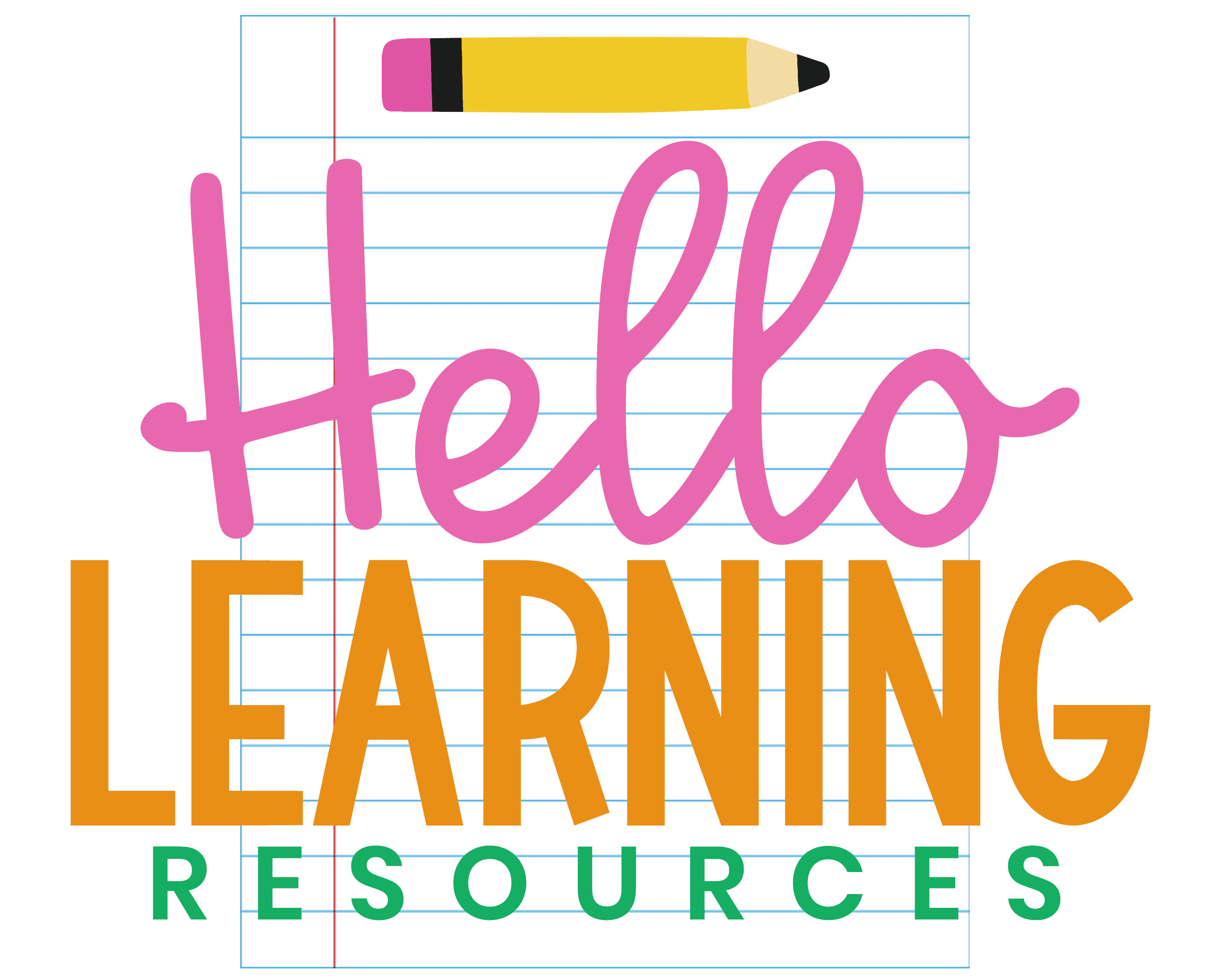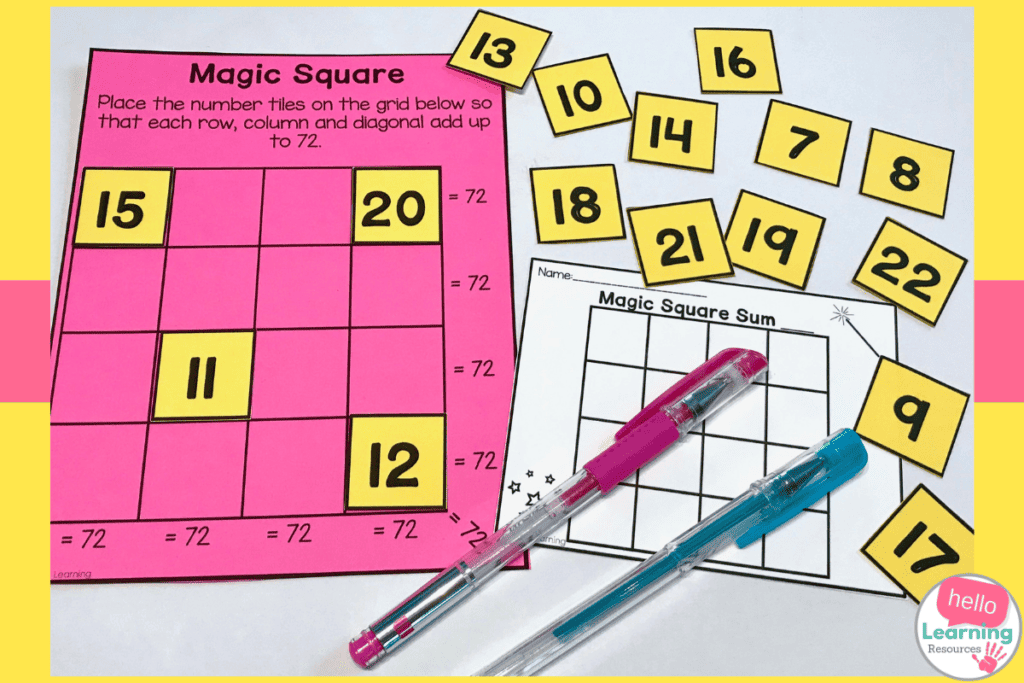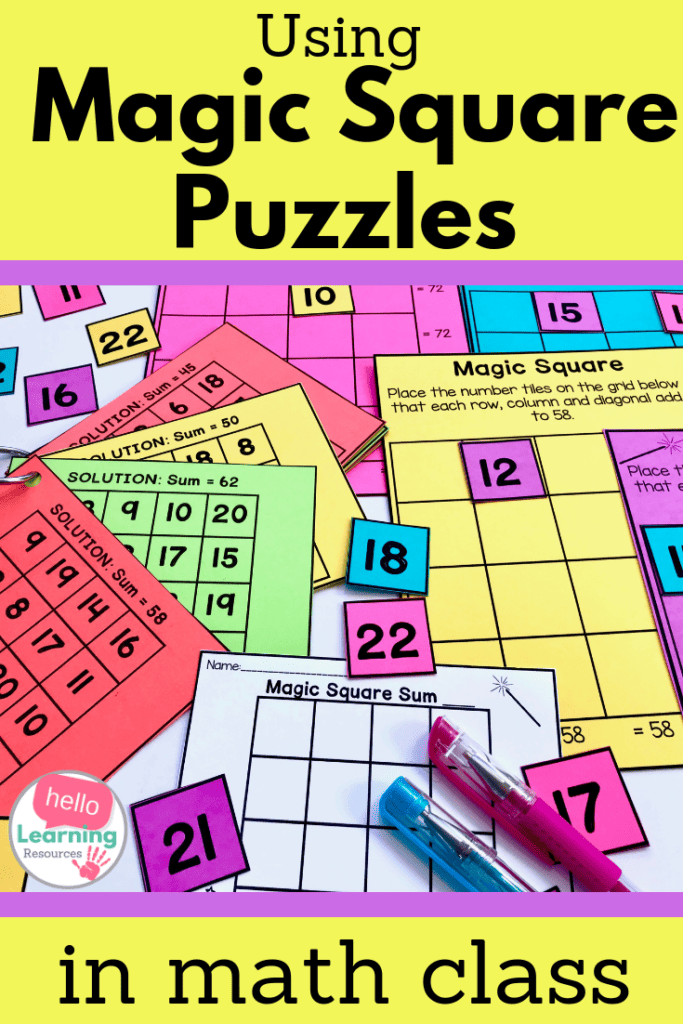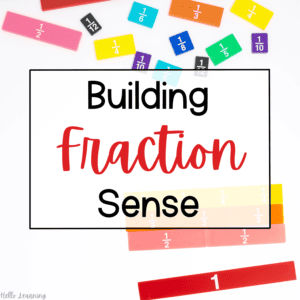Using Magic Square Puzzles in Your Math Class
If your students are anything like mine, they love puzzles. I like to use math puzzles with my math class in many different ways and one of my favorite kind of puzzles are magic squares!
The magic square puzzle dates back over 4,000 years, to Ancient China. They have been used in many ways throughout the years.
What are Magic Square Puzzles?
Magic square puzzles are squares, split into a grid of varying sizes. The most common size is a 4 x 4 magic square. That means there are four squares in each row and 4 squares in each column.
These square puzzles are “magic” because when the numbers in each row, column and diagonal are added together, they all equal the same sum. Ta da!
What Skills do Magic Square Puzzles Build?
Working on magic square puzzles builds mental math skills. Students need to make sure each row, column and diagonal add up to the same sum. As a result, they need to be flexible with their thinking about numbers and how they combine with other numbers. Students will begin to see patterns in how numbers fit together.
Students need to use problem solving skills and logical reasoning to decide which numbers will fit best in each position on the grid. Students will likely need to try several combinations before they find the one that works.
Where to Find Magic Square Puzzles?
You can find many different magic square puzzles by doing a simple search online. You can print them out and make copies for students to complete.
These puzzles are great, however, I knew there was a way they could be even more student friendly. I wanted them to be more “hands-on” and kid friendly for building critical thinking and mental math skills.
My Kid Friendly Magic Square Puzzles
I created a set of magic square puzzles to print and use in my classroom as math centers. I print the puzzles on colorful card stock. This makes them even more fun and engaging!
Each puzzle has its own game board with a 4 x 4 grid, and a magic sum. Along with the game board I made small number cards with the numbers that are to be used for that specific puzzle.


I made small recording sheets to go with the puzzles so students can record their solutions once they have the number tiles arranged on the board in a combination where the rows, columns and diagonals all add up to the magic sum.

How I Prep and Use My Magic Square Puzzles
I print the game boards on card stock and laminate them. After that, I cut out the number square tiles and laminate those as well. I keep all the pieces in large plastic baggies or manilla envelopes. If I take the time to make something for a math center, I like to be able to use it more than once!
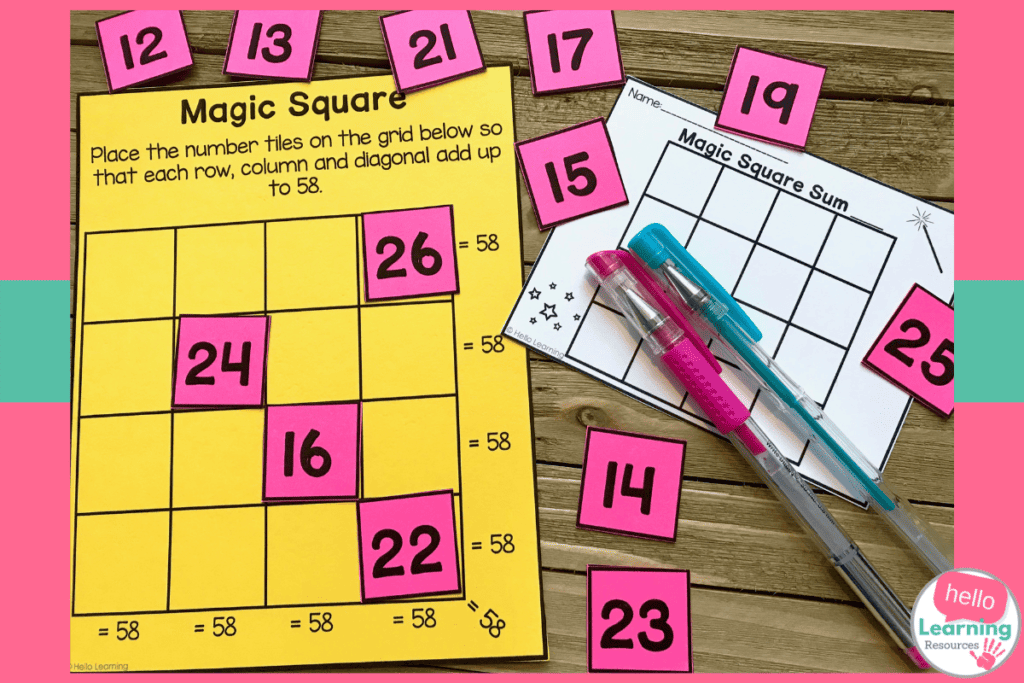
In my classroom, I use these in math centers where students just need to grab the puzzle and the pieces and get to work! I also set up a puzzle table where I rotate different types of puzzles in and out each week. Students can visit the puzzle table at various times throughout the day.
I like that the kids can manipulate the number tiles on the magic square puzzle, trying out various combinations. Because they are using the manipulative number tiles they can change their answers easily. As a result, they don’t have to erase their work over and over when their combinations don’t work. Win!
If you would like to give magic square puzzles a try, and like the idea of using the game board and number tile set up I have shown in this post, I have a set of 20 different puzzles listed in my Teachers Pay Teachers store.
Hopefully your students will enjoy doing magic square puzzles as much as mine do!

